Should kitchen cabinets be symmetrical? Here's why you should throw out the rule book
Symmetry is a design trick used to create smart-looking rooms – but is it the right choice for kitchen cabinetry?
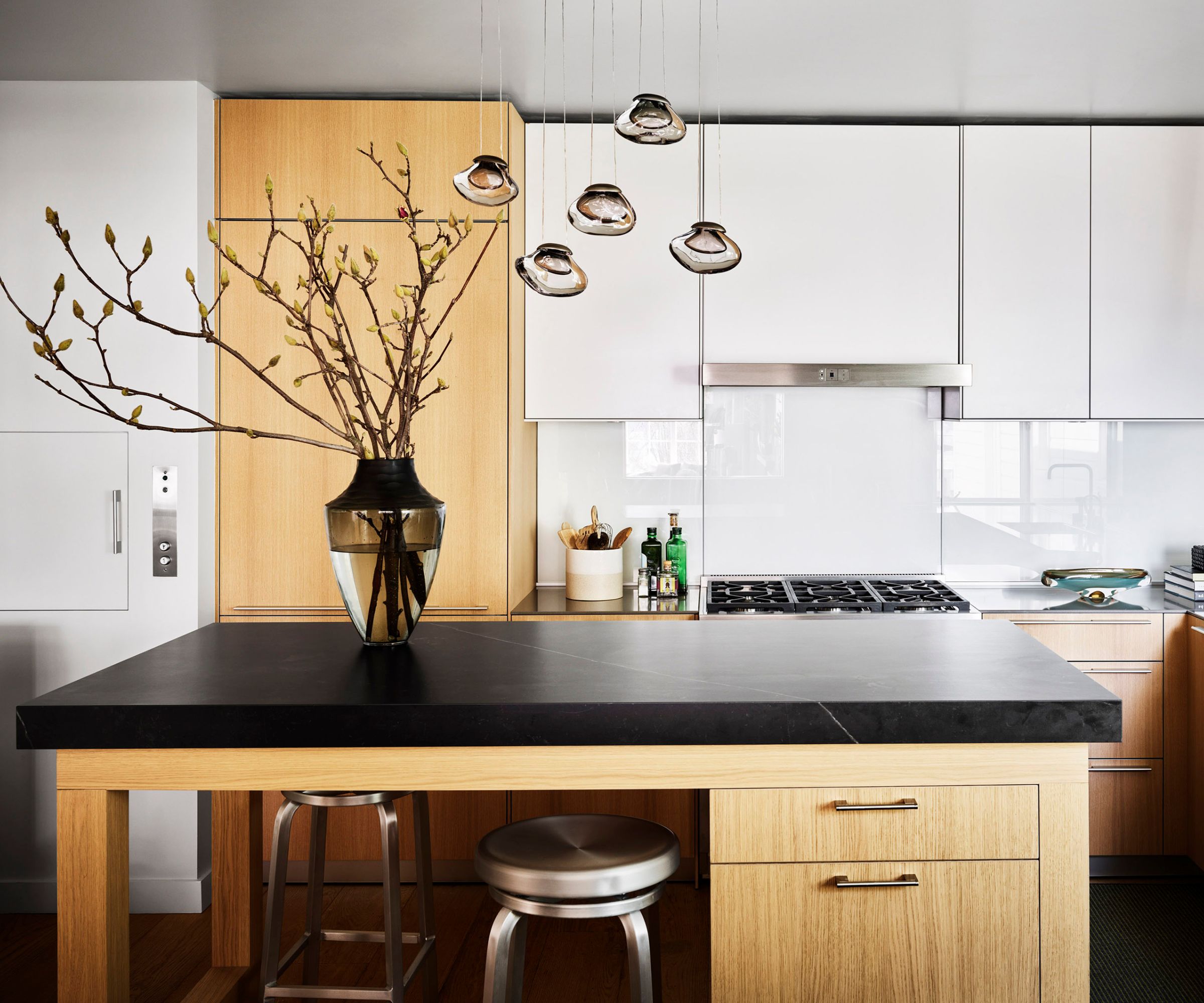

The question 'should kitchen cabinets be symmetrical?' is not always the first thought that comes to mind when designing a dream kitchen, but it is an important one to consider as it can have a significant impact on the look and feel of your space.
Beautiful kitchen cabinets matched with precision planning, can transform a chaotic space into one that's neat and tidy, so it comes as no surprise that more and more people are asking the question: Should kitchen cabinets be symmetrical?
While the decision is entirely personal, it pays to consider why symmetry in interior design is often crucial for creating balance. However, when it comes to installing new kitchen cabinetry, the main factors to ponder are; budget, room size, design preferences, material, and ceiling height. Once you have taken these factors into consideration, you'll be able to make an informed decision.
Should kitchen cabinets be symmetrical?
Kitchen cabinets that are symmetrical are not only beautiful, but they are also often more functional and can serve to balance and align your space. However, they are not the be-all and end-all of kitchen design. There are many reasons why people choose not to have symmetrical cabinetry; wanting a more modern or unusual design for instance. Another reason could be that a small kitchen may not be able to accommodate symmetrical styling.
It’s important to not think of rules but rather be guided by what you love when it comes to designing a kitchen. Once you've found a kitchen style that you'll love, you will know whether you want symmetrical cabinetry or not. Remember, the decision is entirely yours, so you need to think about what you can live with.
Are staggered cabinets out of style?
Staggered cabinets are no longer in style, and we are seeing more and more kitchen designers phase out this once-popular kitchen trend in favor of more luxurious and tailored designs. The new du rigor is to embrace a well-planned combination of cabinets and open shelving. Kitchen shelving will allow you to add delightful decorative moments to your design, as well as provide ample kitchen storage space to boot.
Architect Ben Allen of Studio Ben Allen emphasizes the practical function of shelving above the worktop in kitchen design. ‘We love providing space to display all things cooking and food-related, so we often design open shelves,’ he says. ‘On the lowest shelf, there will be space for items that are used every day – salt and pepper, oil and vinegar, perhaps an open bottle of wine and pots of herbs.’ He might add a rail for hanging tea towels, cooking implements, small pans, or strings of onions and garlic. Higher shelves can be used for attractive cups, teapots, and china, and variations in height and depth can bring playful touches to the design.
How do I choose kitchen cabinets?
Today’s kitchens are the central hub of the house, so we approach the design by thinking of the kitchen layout and furniture in terms of moments, with places to cook, eat, entertain, and sometimes a spot to sit and work, so it is important to carefully consider how you would like this space to look, and finding the right kitchen cabinetry, be it symmetrical or not, is imperative to the function and style of the heart of the home.
Looking for kitchen cabinets is the fun part of planning a kitchen. 'The starting point is to consider how you want your kitchen to look and feel. Think about how it might relate not just to the living and dining areas, especially if it is part of an open plan space, but how it also fits with your overall plan for the house,' says interior designer Tiffany Duggan of Studio Duggan. 'Gather images of kitchens that inspire you and start to hone your ideas, thinking about how they might suit your space, the joinery elsewhere in the house, and the period of your property.'
Symmetrical kitchen cabinet ideas
To help you guide your decision-making process we asked the experts for their advice on choosing symmetrical kitchen cabinets.
1. Create symmetry around an architectural feature
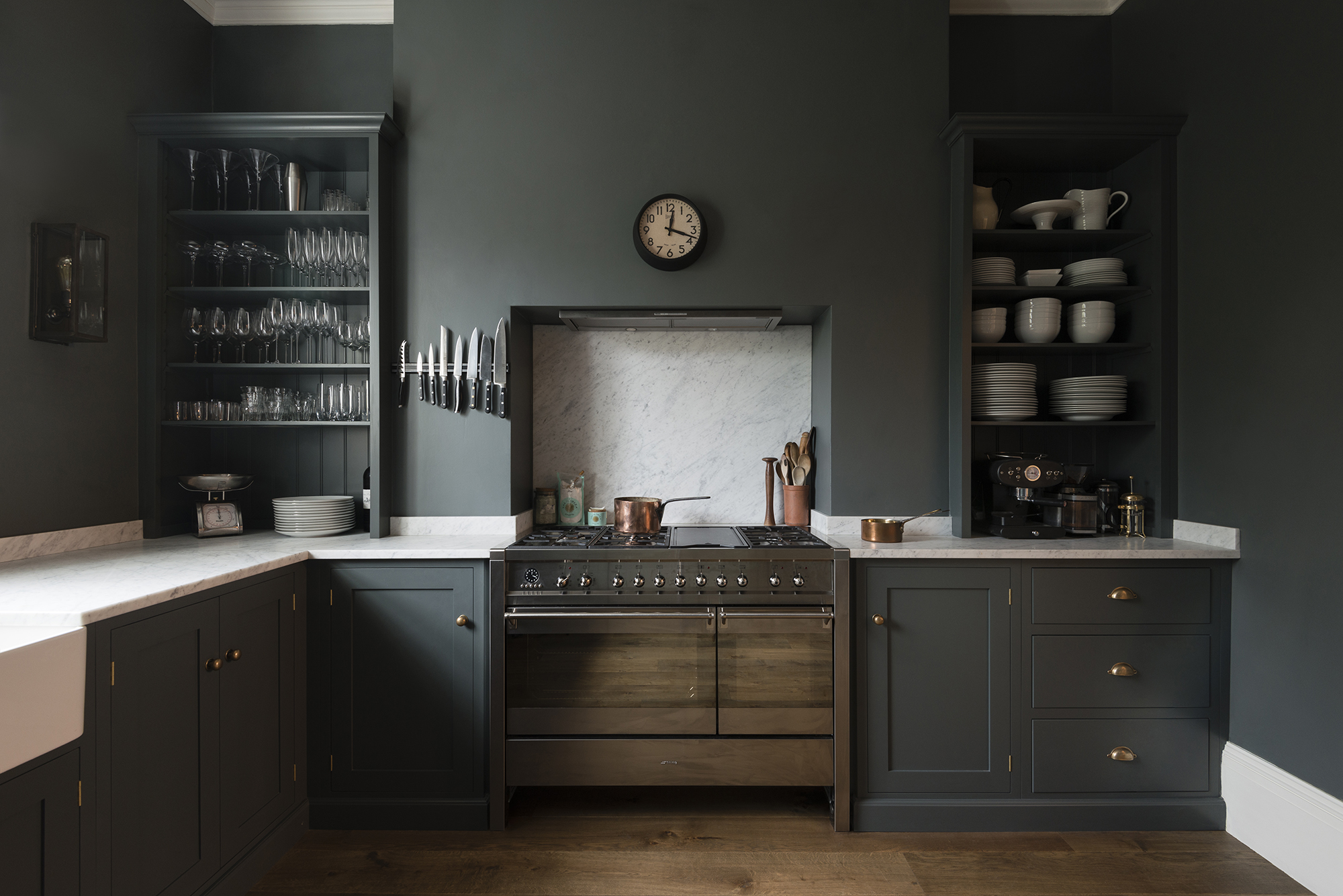
'Alongside the style of cabinetry you're installing, try to consider its proportions and aim to create some sense of symmetry by placing key features, such as a chimney breast framing a range cooker, as a central statement piece,' advises interior designer Tiffany Duggan.
Add some interest and intrigue to your kitchen by throwing the symmetry off-balance with accessories, as shown here in the beautiful kitchen by deVOL.
2. Use symmetry to create a tailored look
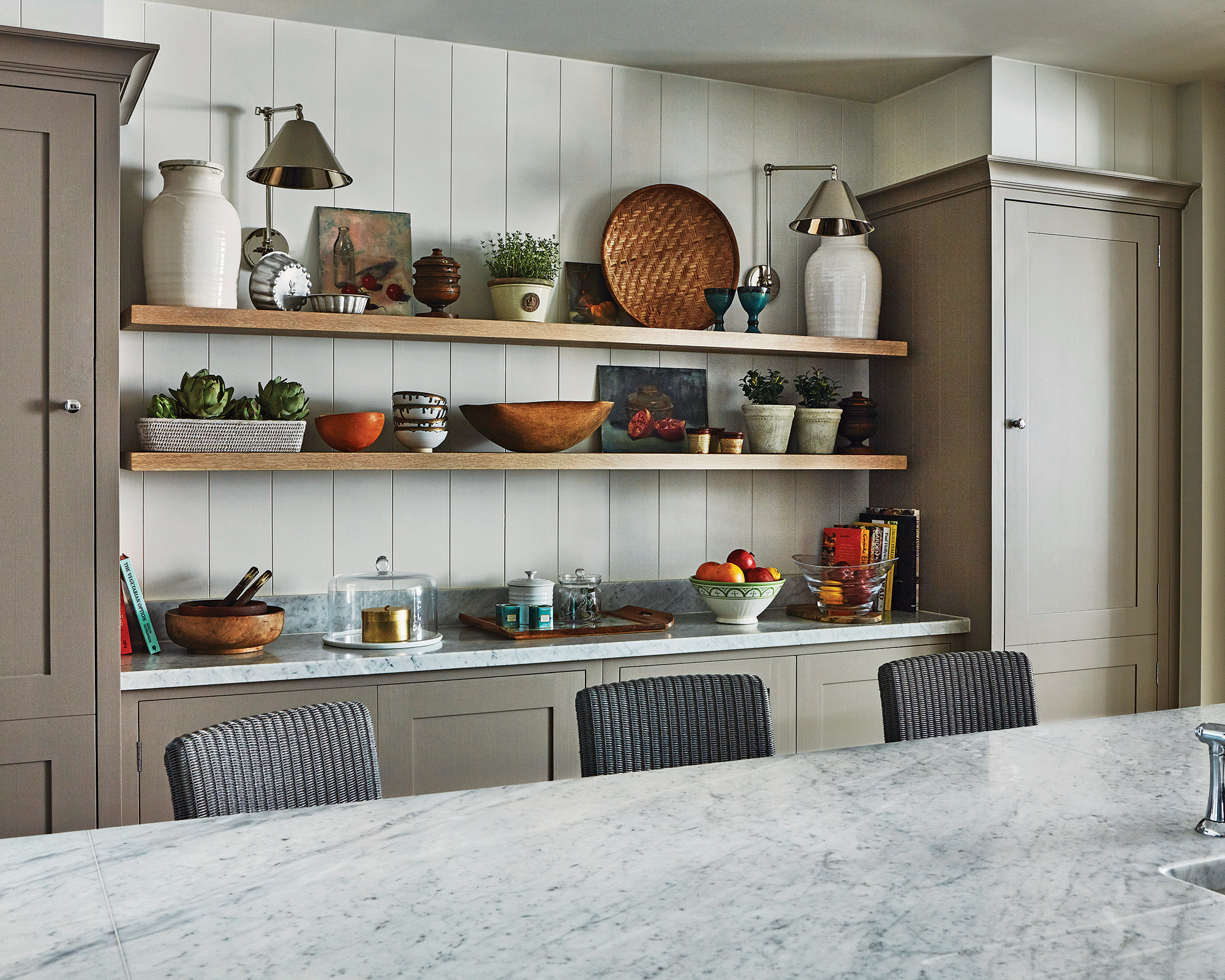
Open kitchen shelving, flanked by a pair of symmetrical cabinets, is great if you are the proud owner of an impressive crockery collection, or are a keen cook who appreciates having ingredients close at hand.
Having everything on display, however, is not for the faint-hearted as it requires a certain amount of dedication to keep shelves looking smart.
Asymmetrical kitchen cabinet ideas
There is certainly something to be said for asymmetrical kitchen cabinets. The sense of quirkiness and practicality of it for starters. We asked the experts for their advice on curating a space that truly doe throw the rule book out of the window.
1. Create a kitchen that is playful and eclectic
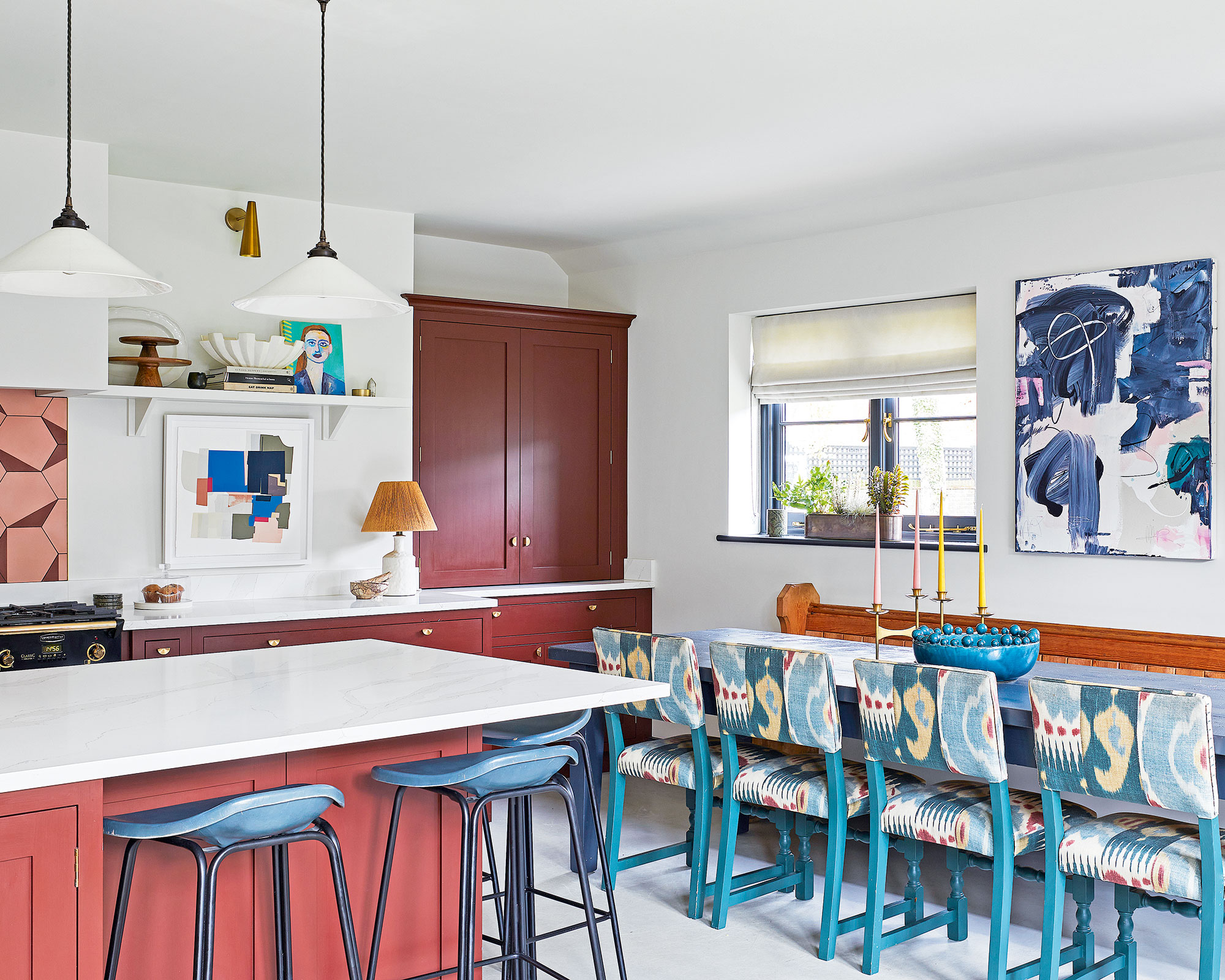
If you want to be happier at home, then curate a decorative kitchen that stimulates the senses. This vibrant kitchen does away with symmetry in favor of character, and the cabinets take a backseat to the playful kitchen color scheme instead.
‘The walls and shelves of kitchens can be transformed with art, providing a daily dose of happiness,’ enthuses Erica Davis, co-founder of Murus Art. ‘If you want to make your cabinetry stand out, paint it in a shade picked out from the artwork. You don't even notice that this kitchen lacks symmetry – you just enjoy this creative space for what it truly is; fun!'
2. Distract with personal objects and creative color
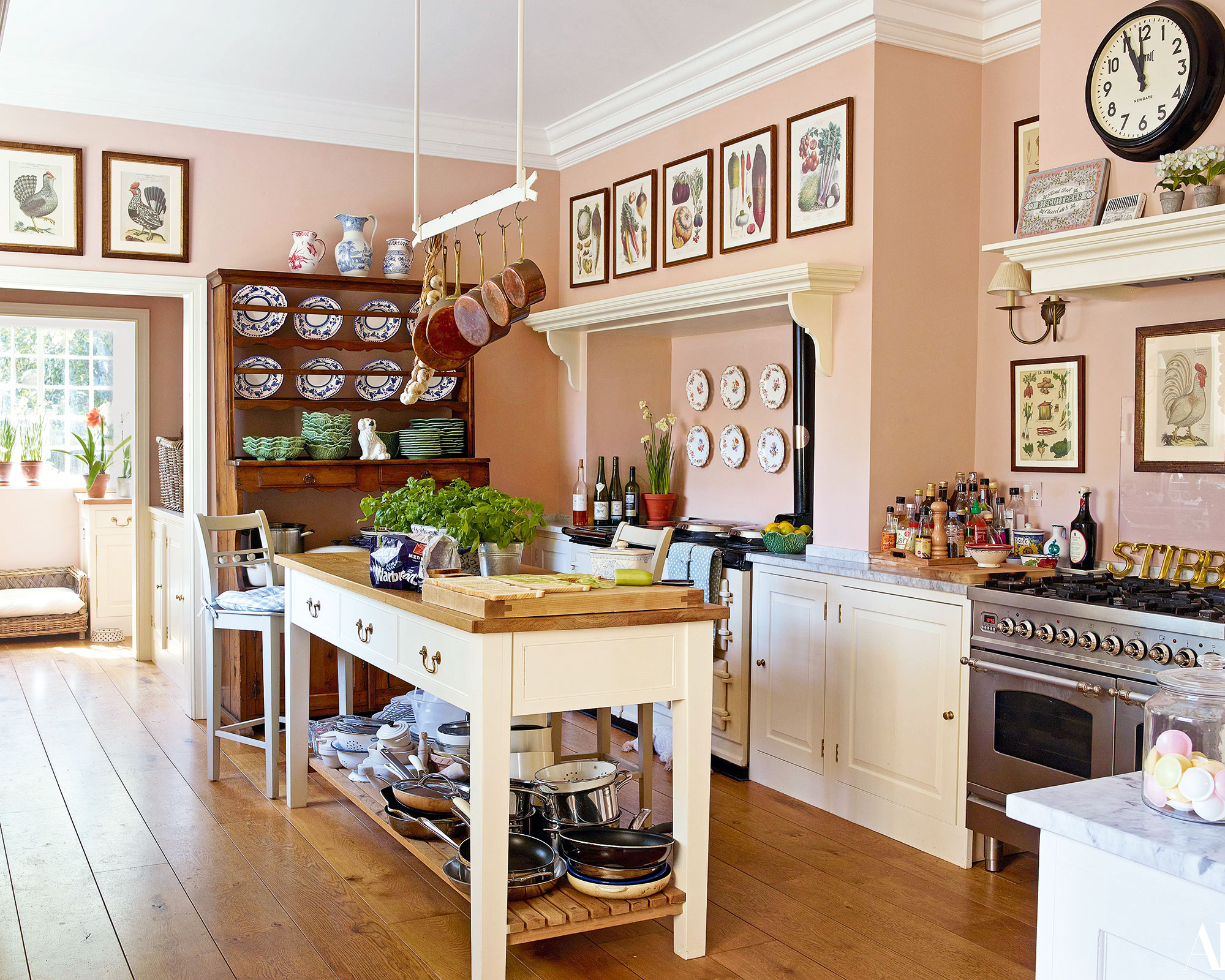
Your kitchen is rife with decorative opportunities that don't rely on cabinetry for their appeal, from walls and flooring to window treatments. Start by deciding how much of a permanent commitment you are willing to make, then add decorative elements that charm and excite. Your kitchen design doesn't need to be all about cabinetry, or symmetry.
‘Colourful kitchen ideas have been enjoying rather a renaissance, and we’re seeing brighter colors on walls, cabinets, and even ceilings,’ says Emma Bulmer, head color consultant at Edward Bulmer Natural Paint. ‘The creative color combinations take away the need for symmetrical elements. allowing for personal objects to just shine.
Sign up to the Homes & Gardens newsletter
Design expertise in your inbox – from inspiring decorating ideas and beautiful celebrity homes to practical gardening advice and shopping round-ups.

Jennifer is the Digital Editor at Homes & Gardens. Having worked in the interiors industry for several years in both the US and UK, spanning many publications, she now hones her digital prowess on the 'best interiors website' in the world. Multi-skilled, Jennifer has worked in PR and marketing and occasionally dabbles in the social media, commercial, and the e-commerce space. Over the years, she has written about every area of the home, from compiling houses designed by some of the best interior designers in the world to sourcing celebrity homes, reviewing appliances, and even writing a few news stories or two.
-
 How to clean a patio – 6 different methods, and when you must use a chemical cleaning agent
How to clean a patio – 6 different methods, and when you must use a chemical cleaning agentFrom manual scrubbing, natural solutions or calling in the pros, industry experts reveal the benefits and considerations of each method
By Andy van Terheyden Published
-
 Kris Jenner's favorite air fryer, the Ninja Crispi, is the perfect small kitchen solution – it deserves a place on the most compact of countertops
Kris Jenner's favorite air fryer, the Ninja Crispi, is the perfect small kitchen solution – it deserves a place on the most compact of countertopsKris approves of this compact yet powerful air fryer, and so do our own kitchen appliance experts, praising it for its multifunctionality
By Hannah Ziegler Published